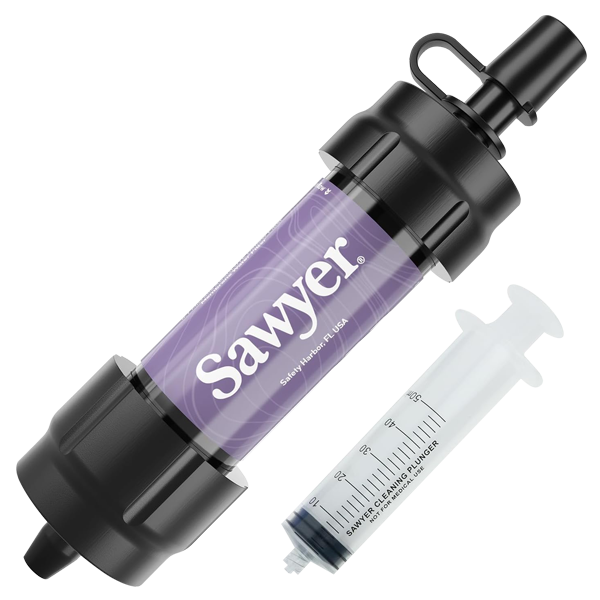

As spring turns to summer, woodland critters begin to awaken… and some are not as cute as others. That’s right; tick season is upon us! In fact, tick season is becoming a greater concern every year.
As climate patterns change, so do the ranges of ticks and the diseases they carry. This means that in the not-so-distant future, we could see the spread of known tick-borne diseases to new regions as well as the emergence of new diseases spread by ticks.
According to the LivLyme Foundation, the yearly estimated number of new cases has increased to 476,000, which is 10 times more Americans than previously reported years.

During my 2023 thru-hike of the Appalachian Trail, I was lucky to have the knowledge and background to help educate hikers on being safe while having fun in the woods.
Now, it is time for me to pass this knowledge on to the masses by busting common hiker myths about Lyme Disease and ticks.

Myth: Only mammals can get ticks.
Ticks have been reported and identified on mammals, birds, amphibians, and reptiles. While I was earning my bachelor's in the Harold W. Manter Laboratory of Parasitology, I worked on a collection of ticks collected from snakes. Some of the tick specimens were as large and thick as my big toe!

Myth: Ticks are only found in the woods.
With approximately 900 known species, ticks have one of the largest distributions of any vector on Earth, meaning they have been found on every continent. Yup, even in the frigid Arctic and Antarctic. As ticks rely on their hosts for survival, they can be found in all types of ecosystems: forests, grasslands, deserts, and even tundra.
Ensuring you have an effective repellent for all kinds of conditions and performing regular tick checks is the best way to stay safe during your adventures.

Myth: All-natural repellents are safest for my health and most effective.
While many of us are worried about the interactions and effects that long-term chemical use can have on our bodies and health, all-natural repellents raise concerns as they can cause skin irritation, cause allergies, and some are known carcinogens. Additionally, they’re not the most effective preventatives.
Picaridin is a great, low-risk, non-greasy topical repellent that's safe for the whole family.
It is made from compounds derived from the pepper plant, and does not impact the integrity of gear. If you are worried about skin sensitivity or the sensory nightmare topical repellents, Permethrin, which is made from compounds extracted from chrysanthemum flowers, is an effective, long lasting repellent designed to be applied directly to clothing and gear.

Myth: Lyme disease always has a red bullseye at the bite site.
According to a study conducted by Johns Hopkins and the Lyme Disease Research Foundation, only 80% of Lyme disease cases displayed the classic red bullseye. In fact many bacterial diseases can present a red bullseye looking pattern (I know this from a personal experience with cat scratch fever). If you see a red bullseye on your body, go seek medical attention.
Some of the most common symptoms of Lyme include the following:
General flu-like symptoms
Headache
Stiff Neck
Muscle/Joint pain
Fever/chills
Fatigue
Poor Appetite
Swollen Glands

Myth: Dogs can’t get Lyme Disease.
Dogs can also be infected with Lyme Disease.
If you love taking your canine ride or die out on the trail, finding a long-lasting and safe repellant, like Permethrin, will keep you both safe from ticks, mosquitos, lice, and fleas during your favorite activities.
Remember, a major way we can counteract the increasing spread of tick-borne disease is by preventing tick bites with safe, long-lasting repellents and other forms of prevention. So, be sure to treat your pup the next time you head out for a hike!

Myth: Once you’re bitten you're infected.
Tick bites are not like zombie bites, you aren’t necessarily infected once you are bitten. According to the CDC, Lyme disease is the most prevalent in Blacklegged (Deer) ticks (Ixodes scapularis). Ticks become infected with Lyme disease bacterium by taking a blood meal from an infected wildlife host, typically a rodent. This bacteria is then passed on by nymphs or adult females during their next blood meals.
Juvenile ticks, nymphs, actively quest April through July, while adults are typically active in the early Spring and Fall.
In most cases a tick must be attached for 36-48 hours for the Lyme disease bacterium to be transmitted.

Myth: Lyme disease is the only disease you can get from ticks.
Ticks carry a plethora of vector-borne diseases. Many are specific to the species, the life cycle stage of the tick, as well as the localities they inhabit. Some of these diseases include:
Alpha-gal Syndrome
无形体病
巴贝西亚原虫病
Rickettsia
落基山斑疹热
Tick Paralysis
Tick-Borne Encephalitis
图拉里血症

















